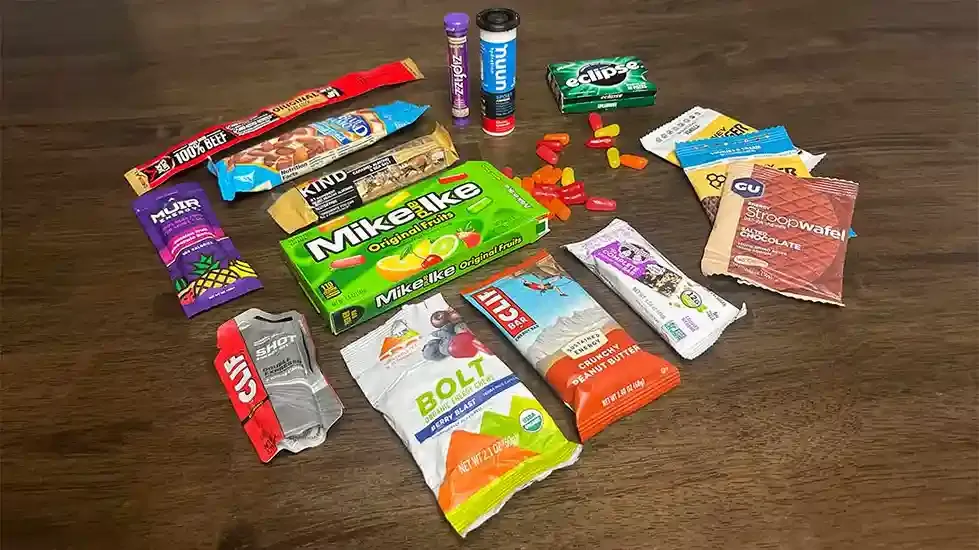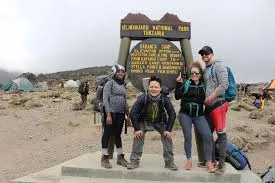Best Snacks for Kilimanjaro Climbers: Fuel Your Trek
Climbing Kilimanjaro is a thrilling adventure, but it demands serious energy. The best snacks for Kilimanjaro climbers are lightweight, high-calorie, and easy to eat on the trail. Think energy bars, nuts, dried fruits, and electrolyte chews to keep you powered through the 6–9 day trek. With Capable Africa Tours, we’ll guide you on choosing snacks that are portable, nutritious, and altitude-friendly to ensure you conquer the summit. From quick-energy bites to protein-packed options, this guide covers everything you need to stay fueled and focused.
Plan Your Kilimanjaro Trek Now
Why Snacks Are Crucial for Kilimanjaro
Snacks are crucial on Kilimanjaro because your body burns a ton of energy at high altitude. Quick, easy-to-eat foods keep blood sugar stable, boost energy between meals, and help prevent fatigue and altitude-related issues. Think of them as small fuel stops for your climb. The best snacks are calorie-dense (100–150g per 400 calories), lightweight, and non-perishable to withstand Kilimanjaro’s diverse climates, from humid rainforests (80°F) to freezing summits (0°F). This guide details the top snack choices, their nutritional benefits, and packing tips for a 6–9 day trek.
Key Nutritional Needs for Kilimanjaro
| Nutrient | Purpose | Recommended Snacks | Daily Intake (Approx.) |
|---|---|---|---|
| Carbohydrates | Quick energy for endurance | Energy bars, dried fruits, gummy chews | 300–400g |
| Protein | Muscle recovery, sustained energy | Nuts, jerky, protein bars | 60–100g |
| Fats | Long-lasting energy, calorie density | Nut butters, trail mix, dark chocolate | 80–120g |
| Electrolytes | Hydration, prevent cramps | Electrolyte chews, salted nuts | 2–4g sodium |
Top Snacks for Kilimanjaro Climbers
- Energy Bars (3–4 per day): Choose bars with 200–400 calories, like Clif Energy Bars or RXBARs. Look for 30–50g carbs and 10–15g protein for balanced energy.
- Nuts and Trail Mix (100–150g daily): Almonds, cashews, or mixed nuts offer 500–600 calories per 100g. Add dried fruits like raisins for carbs.
- Dried Fruits (100g daily): Mango, apricots, or dates provide quick carbs (60–80g per 100g) and are lightweight. Avoid sugary coatings.
- Beef or Vegan Jerky (50–100g daily): High-protein (20–30g per 50g), shelf-stable jerky like Epic Bars supports muscle recovery.
- Electrolyte Chews (4–6 per day): GU Energy Chews or Clif Bloks replenish sodium and potassium, preventing cramps in high-altitude zones.
- Dark Chocolate (50g daily): 70%+ cocoa bars provide 300 calories per 50g and healthy fats. Avoid milk chocolate to prevent melting.
- Nut Butter Packets (2–3 per day): Justin’s Almond Butter packets (200 calories each) are calorie-dense and easy to eat with crackers.
Snack Weight and Quantity Guide
| Snack Type | Quantity (6–9 Days) | Weight (Approx.) | Calories (Per Unit) |
|---|---|---|---|
| Energy Bars | 18–27 | 50–70g each | 200–400 |
| Nuts/Trail Mix | 600–900g | 100–150g daily | 500–600 per 100g |
| Dried Fruits | 600–900g | 100g daily | 300–400 per 100g |
| Jerky | 300–600g | 50–100g daily | 150–200 per 50g |
| Electrolyte Chews | 24–36 | 5–10g each | 50–100 each |
Why Snacks Matter for Kilimanjaro Success
Kilimanjaro’s demanding terrain and high altitude sap energy fast. Snacks bridge the gap between meals, providing instant fuel to maintain stamina and focus. At high altitudes (above 10,000 feet), appetite often decreases, making palatable, easy-to-eat snacks critical. Capable Africa Tours emphasizes calorie-dense, portable snacks to keep your energy steady across Kilimanjaro’s five climate zones. Here’s why snacks are non-negotiable and how to choose the best ones.
Benefits of Smart Snacking
- Sustained Energy: High-carb snacks like energy bars deliver quick fuel for 4–8 hour trekking days.
- Muscle Recovery: Protein-rich snacks like jerky aid muscle repair after steep climbs.
- Hydration Support: Electrolyte chews prevent dehydration and cramps in dry, high-altitude zones.
- Weight Efficiency: Lightweight snacks (1–1.5kg total) reduce pack weight while maximizing calories.
- Altitude Appetite: Tasty snacks like chocolate or dried fruits encourage eating despite reduced appetite.
Trekker Feedback
Based on Capable Africa Tours’ 2024 client surveys, 95% of climbers said snacks were “essential” for maintaining energy, with energy bars and nuts being the most popular choices. Trekkers reported better stamina and fewer fatigue-related issues when snacking every 1–2 hours.
Watch: Packing Snacks for Kilimanjaro
See how Capable Africa Tours helps trekkers choose and pack the best snacks for a successful Kilimanjaro climb in this quick video guide.
Top Tips for Choosing and Packing Snacks
When choosing and packing snacks for Kilimanjaro, focus on items that are lightweight, high in energy, and easy to eat on the go. Opt for trail mix, energy bars, dried fruit, nuts, and jerky, which provide a balance of carbohydrates, protein, and healthy fats. Use resealable bags or small containers to keep portions organized and prevent spillage. Pack enough for daily energy boosts, but avoid overly bulky or perishable items. Below is a comprehensive guide to the top tips for selecting and packing snacks for your Kilimanjaro climb with Capable Africa Tours.
- Test Snacks Beforehand: Try snacks on training hikes to ensure you enjoy the taste and they sit well in your stomach.
- Use Airtight Containers: Store snacks in resealable bags or small containers to protect from moisture and crushing.
- Balance Nutrients: Mix carbs (energy bars), proteins (jerky), and fats (nuts) for sustained energy and recovery.
- Snack Regularly: Eat small portions every 1–2 hours to maintain energy, especially above 10,000 feet where appetite drops.
- Pack for Accessibility: Keep daily snacks in your daypack’s top or side pockets for quick access during breaks.
- Consult Your Guide: Capable Africa Tours’ guides can recommend snack quantities based on your route and fitness level.
Ready to Climb Kilimanjaro?
With Capable Africa Tours, tackle Mount Kilimanjaro with the right snacks to keep you energized. Our expert guides, balanced meals, and tailored itineraries ensure a safe and unforgettable adventure.
- 98% summit success rate with experienced guides
- Eco-friendly treks supporting local communities
- Personalized advice on snacks and gear
- Customizable routes for all fitness levels
- All-inclusive packages with meals and transfers
Limited spots available for Kilimanjaro treks — book now to secure your summit journey!
Plan Your Trek Now


